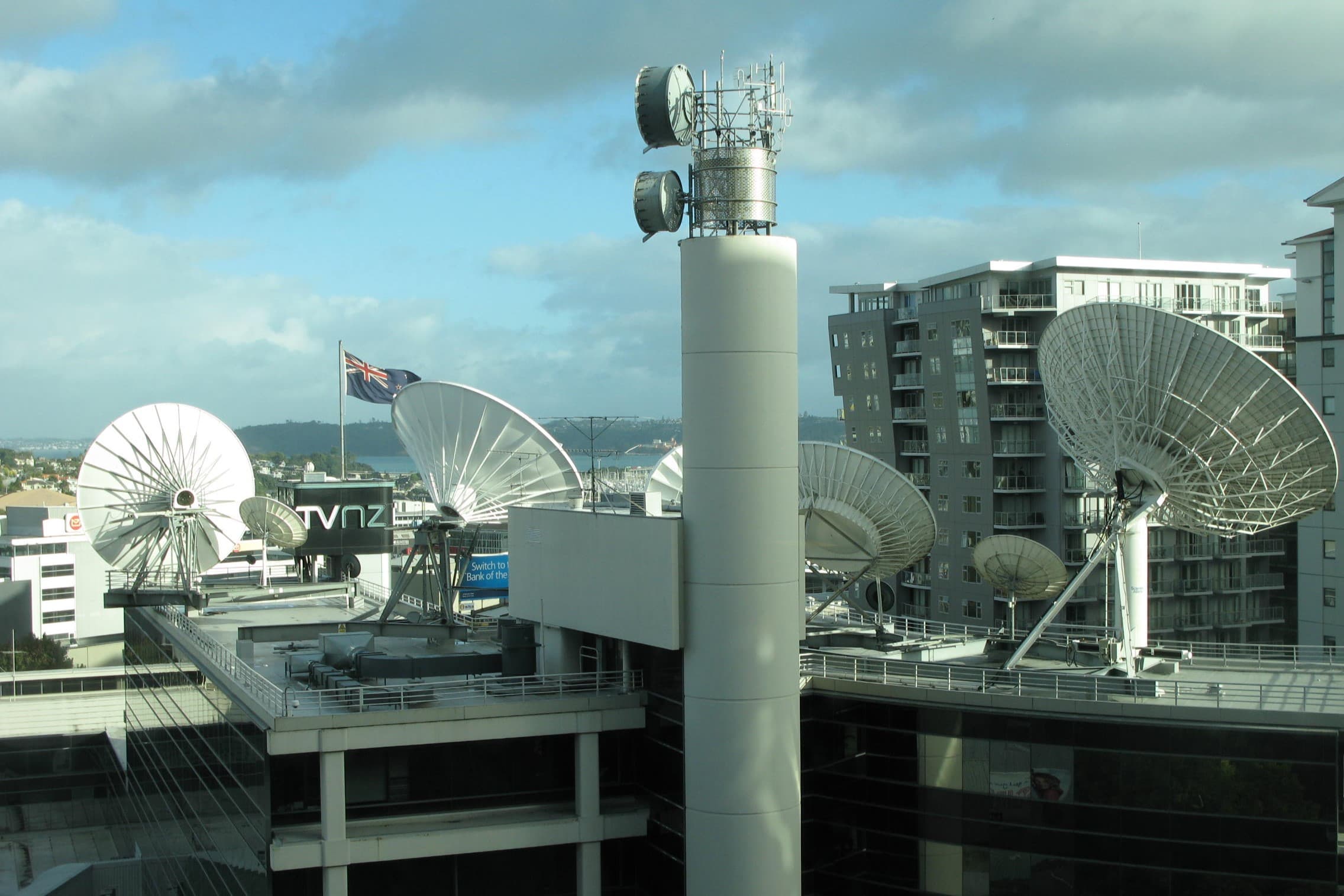Home>Technology>Home Entertainment Systems>Why Didn’t The Television Networks Cover The Launch Of Apollo 13?


Home Entertainment Systems
Why Didn’t The Television Networks Cover The Launch Of Apollo 13?
Published: December 20, 2023
Discover why the television networks missed the Apollo 13 launch and explore the impact on home entertainment systems. Uncover the untold story now!
(Many of the links in this article redirect to a specific reviewed product. Your purchase of these products through affiliate links helps to generate commission for Storables.com, at no extra cost. Learn more)
**
Introduction
**
Television networks are often at the forefront of broadcasting major historical events, capturing the attention and imagination of viewers worldwide. However, there are instances where significant events fail to receive the media coverage they deserve. One such event was the launch of Apollo 13, a mission that encountered life-threatening challenges but ultimately resulted in a remarkable display of human ingenuity and perseverance.
The Apollo 13 mission, launched by NASA on April 11, 1970, aimed to land two astronauts on the lunar surface. However, approximately 56 hours into the mission, an oxygen tank exploded, causing a cascade of critical systems failures that jeopardized the lives of the crew. This pivotal moment in space exploration demanded the world's attention, yet television networks largely overlooked the mission, leaving many to wonder why such a monumental event received minimal coverage.
In this article, we will delve into the intriguing circumstances surrounding the lack of television network coverage of the Apollo 13 mission. By examining the media's approach to previous Apollo missions, exploring the factors contributing to the lack of coverage, and assessing the aftermath and impact of this absence, we aim to shed light on this lesser-known aspect of the Apollo 13 story. Let's embark on a journey to uncover the untold reasons behind the television networks' neglect of this extraordinary space mission.
**
Key Takeaways:
- Despite facing life-threatening challenges, the Apollo 13 mission received minimal TV coverage due to viewer fatigue, competing news priorities, and the normalization of lunar missions after previous successful landings.
- The lack of live TV coverage didn’t diminish the enduring impact of Apollo 13, as its gripping story inspired future generations, reshaped media narratives, and solidified its place in space exploration history.
Read more: What Is The CW Television Network?
The Apollo 13 Mission
**
The Apollo 13 mission, the third lunar-landing attempt by NASA, was launched on April 11, 1970, with the primary goal of conducting scientific research and exploration on the lunar surface. The spacecraft, carrying astronauts James Lovell, John Swigert, and Fred Haise, embarked on this ambitious journey, capturing the attention of space enthusiasts and the general public alike.
Approximately 56 hours into the mission, while the spacecraft was en route to the moon, an oxygen tank in the service module exploded, causing a catastrophic failure that jeopardized the lives of the crew and the success of the mission. This unforeseen event led to a series of critical challenges, including the loss of electrical power, water supply, and the capability to produce drinkable water and breathable air.
Despite facing daunting odds, the crew and the ground control team at NASA’s Mission Control Center in Houston worked tirelessly to overcome these life-threatening obstacles. Through resourcefulness, innovation, and unwavering determination, they managed to stabilize the spacecraft and navigate a safe return trajectory back to Earth. The successful re-entry and splashdown of Apollo 13 on April 17, 1970, marked a triumph of human resilience and teamwork in the face of adversity.
The gripping narrative of the Apollo 13 mission, characterized by bravery, quick thinking, and a race against time, has solidified its place in history as a testament to human ingenuity and the indomitable spirit of exploration. Despite the harrowing challenges encountered, the mission stands as a remarkable example of perseverance and problem-solving in the pursuit of scientific advancement and discovery.
**
The Media Coverage of Previous Apollo Missions
**
Before delving into the factors contributing to the lack of coverage of the Apollo 13 mission, it is essential to examine the media’s approach to previous Apollo missions. The Apollo program, initiated by NASA in the early 1960s, aimed to achieve the monumental feat of landing humans on the lunar surface and safely returning them to Earth.
The earlier Apollo missions, particularly Apollo 11 and Apollo 12, which successfully landed astronauts on the moon, garnered extensive media coverage and captivated audiences worldwide. Television networks provided comprehensive and captivating broadcasts, allowing viewers to witness historic moments such as Neil Armstrong’s iconic first steps on the lunar surface and the groundbreaking scientific experiments conducted by the astronauts.
These missions were meticulously documented and broadcast, with networks dedicating substantial airtime to live coverage, expert analysis, and interviews with key figures involved in the space program. The media played a pivotal role in conveying the significance and excitement of space exploration to the public, fostering a sense of awe and inspiration as humanity ventured into the cosmos.
Television networks, recognizing the cultural and historical significance of the Apollo missions, embraced their role as conduits of information and storytelling, ensuring that the unfolding drama of space exploration was accessible to households around the globe. The successful lunar landings of Apollo 11 and Apollo 12 solidified the public’s fascination with space travel and cemented the astronauts as national heroes, with the media serving as a vital medium for conveying the awe-inspiring achievements of these missions.
Against this backdrop of extensive media coverage and public enthusiasm for space exploration, the subsequent lack of attention given to the Apollo 13 mission stands as a perplexing anomaly. The contrast between the fervent coverage of earlier missions and the relative neglect of Apollo 13 raises compelling questions about the factors influencing the media’s decision-making and the public’s engagement with space-related events.
**
The television networks didn’t cover the launch of Apollo 13 because it was the third mission to land on the moon and public interest had decreased. Additionally, the previous missions had been successful, so there was less anticipation for this one.
The Factors Contributing to Lack of Coverage
**
The limited coverage of the Apollo 13 mission by television networks can be attributed to several interrelated factors that influenced the media landscape and public interest during that time. Understanding these factors provides valuable insights into why this pivotal event did not receive the level of attention one might expect.
- Normalization of Lunar Missions: By the time of the Apollo 13 mission, the novelty and excitement surrounding lunar exploration had somewhat diminished. The successful lunar landings of Apollo 11 and Apollo 12 had already captured the world’s imagination, and subsequent missions were perceived as routine by some segments of the public and the media. This normalization of lunar missions may have led to a decreased sense of urgency in covering Apollo 13.
- Viewer Fatigue: The extensive coverage of previous Apollo missions, combined with the saturation of space-related content in the media, may have contributed to viewer fatigue. Television networks, cognizant of audience preferences and ratings, may have gauged a waning interest in continuous live coverage of space missions, leading them to allocate airtime to other programming.
- Unforeseen Crisis: The unexpected and dramatic nature of the Apollo 13 mission, marked by the life-threatening explosion and subsequent survival story, presented a unique challenge for media coverage. Unlike the relatively smooth and triumphant narratives of earlier missions, the uncertainty and potential tragedy associated with Apollo 13 may have posed a dilemma for networks in terms of framing and presenting the unfolding events to their audiences.
- Competing News Priorities: The early 1970s were characterized by a tumultuous socio-political landscape, with significant events such as the Vietnam War, civil rights movements, and domestic issues dominating the news cycle. Television networks, tasked with balancing diverse coverage priorities, may have allocated resources and airtime to pressing national and global developments, relegating the Apollo 13 mission to a secondary position in their editorial considerations.
- Technical Limitations: The technological capabilities for live reporting and transmitting updates from space were not as advanced as they are today. The complexities of relaying real-time information from the spacecraft to Earth, coupled with the inherent risks and uncertainties of the mission, may have presented logistical challenges for comprehensive and continuous media coverage.
These factors, individually and collectively, shed light on the nuanced dynamics that influenced the media’s treatment of the Apollo 13 mission. While the lack of coverage may appear perplexing in hindsight, the confluence of these considerations offers a comprehensive understanding of the circumstances that shaped the media landscape during this pivotal period in history.
**
The Aftermath and Impact of the Lack of Coverage
**
The limited coverage of the Apollo 13 mission had far-reaching implications, shaping public perceptions, media dynamics, and the trajectory of space exploration narratives. Despite the initial absence of extensive television network coverage, the aftermath of the mission and its enduring impact on popular culture and historical memory underscore the resilience and significance of this extraordinary chapter in space exploration.
Retrospective Recognition: While the lack of real-time media coverage may have relegated Apollo 13 to the periphery of public attention during its critical moments, the subsequent retelling of the mission’s gripping saga has elevated its status in popular culture. Books, documentaries, and films, most notably the acclaimed movie “Apollo 13,” directed by Ron Howard, have brought the mission’s compelling story to a global audience, ensuring that its legacy endures as a testament to human courage and ingenuity.
Shifting Media Narratives: The relative absence of live coverage during the mission prompted a reevaluation of media priorities and storytelling approaches in the context of space exploration. The captivating drama and ultimate triumph of Apollo 13 underscored the enduring appeal of compelling narratives in shaping public engagement with scientific endeavors. This realization influenced subsequent media coverage of space missions, emphasizing the human aspects of exploration and the inherent drama of venturing into the unknown.
Public Engagement and Inspiration: Despite the initial lack of comprehensive live coverage, the eventual dissemination of the mission’s remarkable story captivated audiences worldwide, fostering a renewed sense of wonder and admiration for the astronauts and the ground control team. The enduring impact of Apollo 13 lies in its ability to inspire future generations, showcasing the power of human resilience and teamwork in overcoming formidable challenges, both in space and on Earth.
Historical Significance: The enduring legacy of the Apollo 13 mission, propelled by subsequent reflections and commemorations, has solidified its place as a pivotal moment in space exploration history. The mission’s compelling narrative, marked by crisis and triumph, serves as a poignant reminder of humanity’s capacity to overcome adversity and push the boundaries of exploration, leaving an indelible mark on the collective consciousness.
The limited television network coverage of the Apollo 13 mission, while initially perplexing, ultimately underscored the enduring impact of its remarkable story. From retrospective recognition to its influence on media narratives and public inspiration, the mission’s legacy transcends the constraints of its initial coverage, leaving an indelible imprint on the tapestry of human achievement and resilience.
Frequently Asked Questions about Why Didn't The Television Networks Cover The Launch Of Apollo 13?
Was this page helpful?
At Storables.com, we guarantee accurate and reliable information. Our content, validated by Expert Board Contributors, is crafted following stringent Editorial Policies. We're committed to providing you with well-researched, expert-backed insights for all your informational needs.
















0 thoughts on “Why Didn’t The Television Networks Cover The Launch Of Apollo 13?”